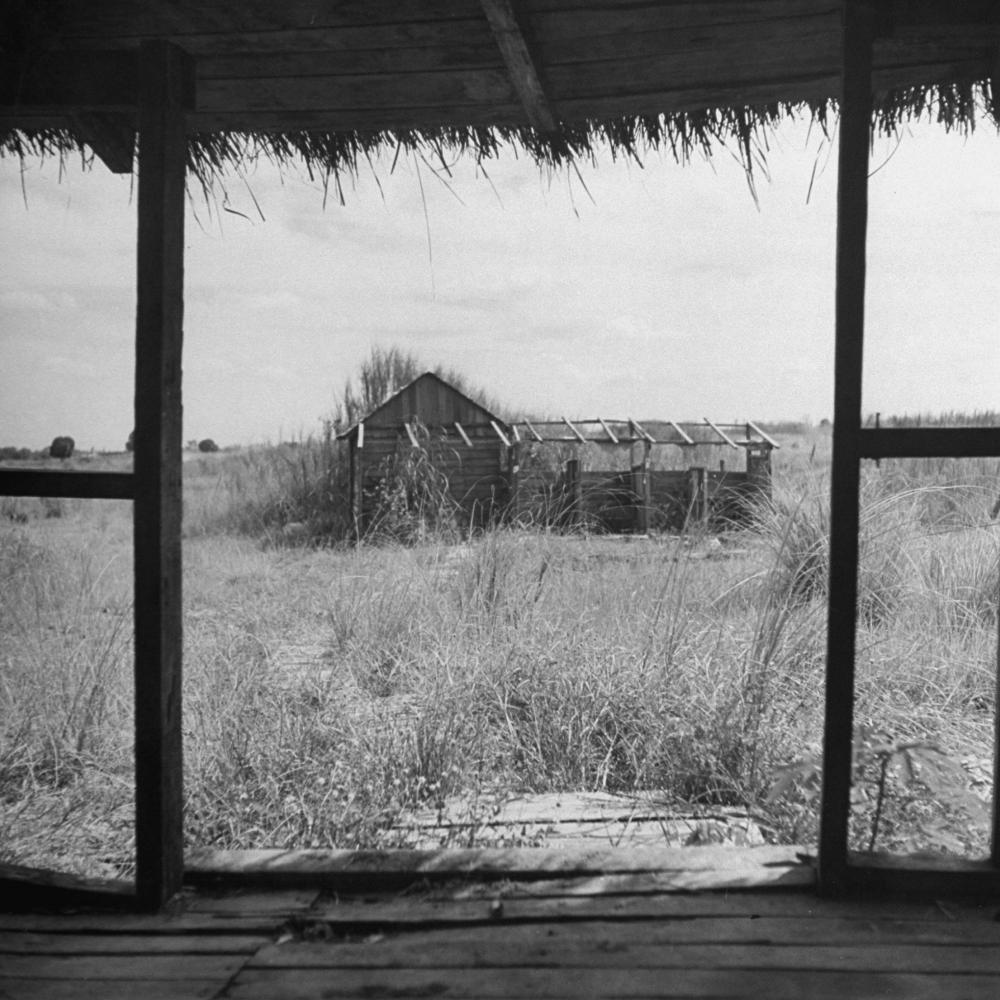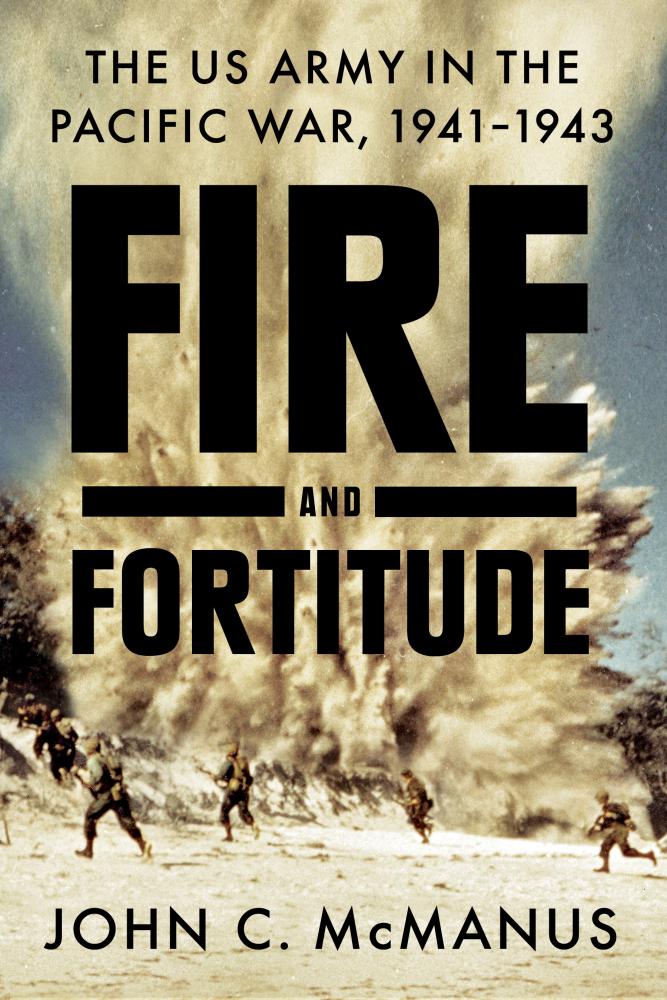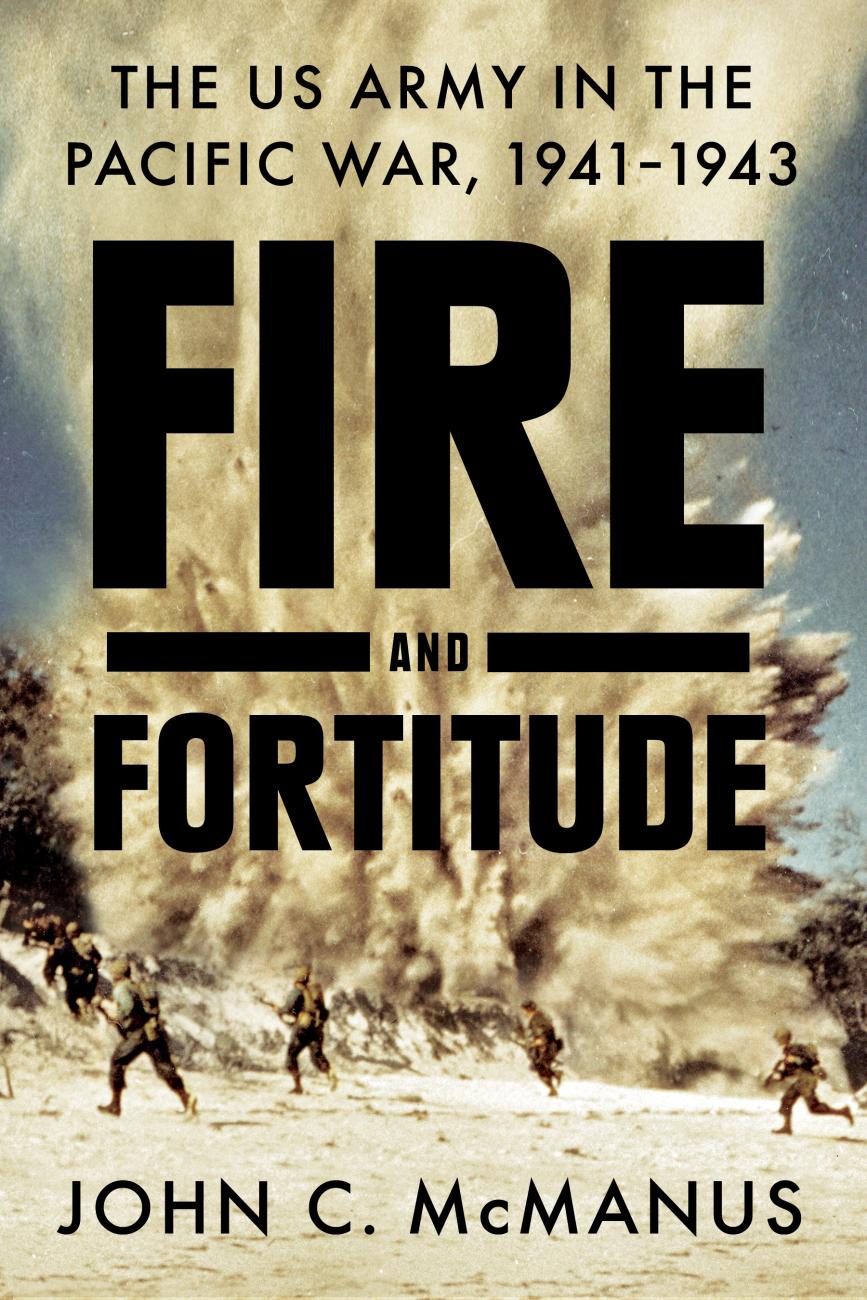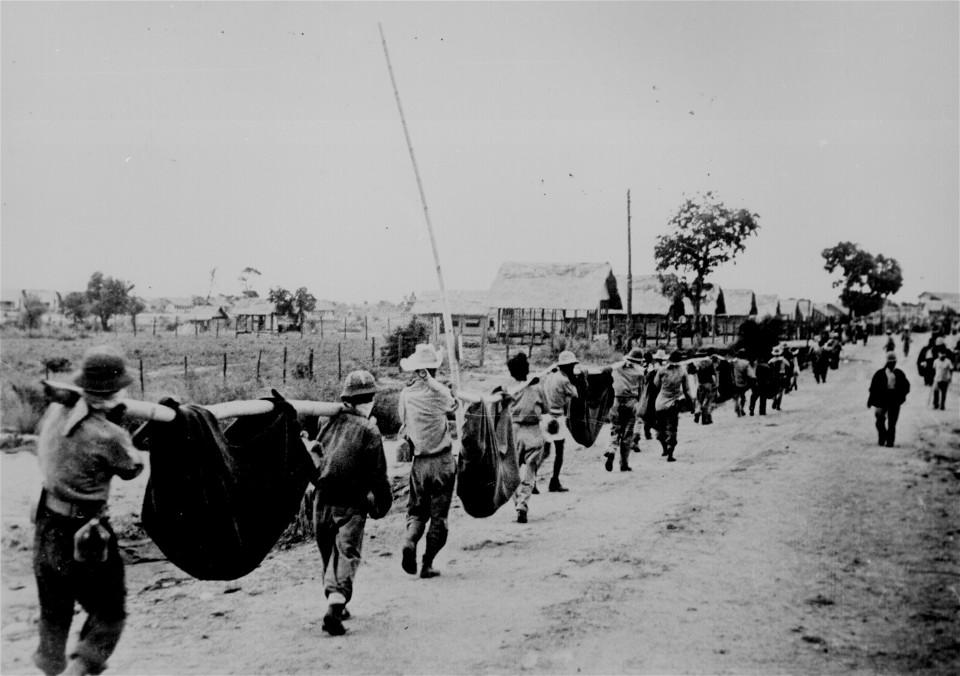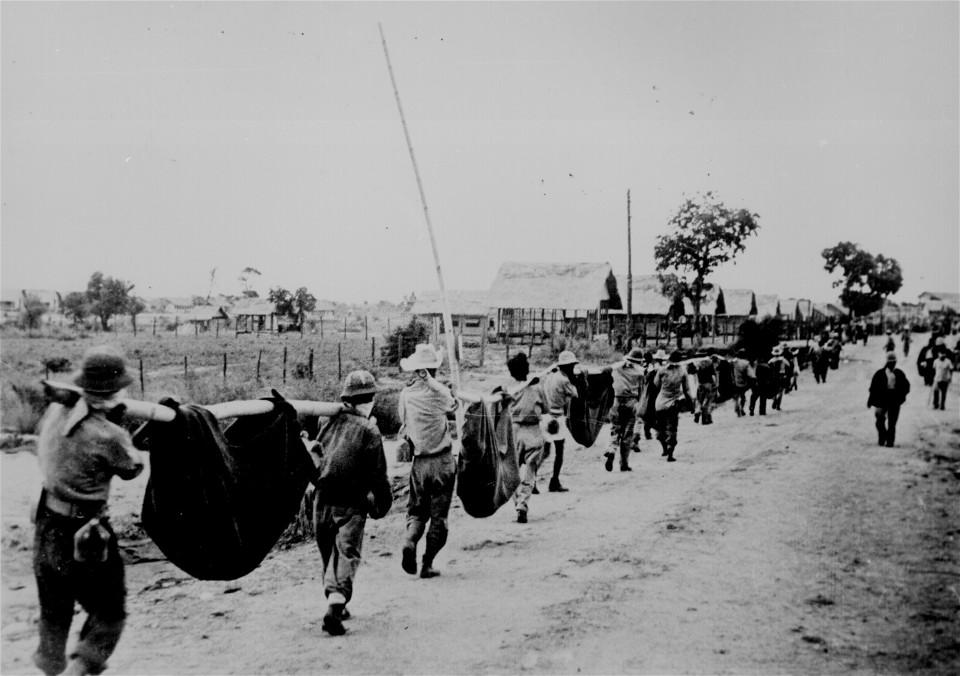What is hell like? American and Filipino soldiers who ended up as prisoners of war following the Japanese invasion of the Philippines thought they were living in it. After a successful attack on American forces at Pearl Harbor in December 1941, Japan invaded the Philippines the following month. At the beginning of April 1942, the U.S. Army was forced to surrender its position on the Bataan Peninsula, resulting in 15,000 Americans and 45,000 Filipino soldiers becoming prisoners of war. The soldiers endured what became known as the Bataan Death March, a perilous sixty-mile journey during which they were subjected to physical abuse and denied food and water. Thousands perished along the way. The soldiers who survived the march, then had to survive Camp O’Donnell.
In an excerpt from Fire and Fortitude: The US Army in the Pacific War, 1941-1943 (Caliber, 2019), historian John C. McManus describes a harrowing existence for which none of them were prepared. McManus wrote the book with the support of an NEH Public Scholar award.
Throughout April 1942, the survivors of the Death March staggered into an unfinished prison compound, called O’Donnell, that had originally been designed as a prewar training area for the Philippine Army. “Barracks” consisted of nipa palm-and-thatch roofs over a skeleton of bamboo poles. Rows of bamboo, secured with rattan cord, provided crude sleeping bays. Floors consisted either of dirt or woven mats. The enclosure spanned some 617 acres of treeless rice paddy and grassland. Rusty strands of barbed wire and a few watchtowers ringed the area. Major General Kawane, whose substandard planning had exacerbated the misery of the Death March, had chosen O’Donnell as a POW compound back in March but had done little since to prepare it for the bedraggled, half-starved new occupants. Some of the buildings were in disrepair, with roofs blown all or partially away. At most, the camp might adequately house thirty thousand prisoners. Instead, it would receive at least twice that many.
As the various groups staggered into the compound, they were searched for weapons and valuables by the Japanese guards. “All remaining personal possessions were confiscated,” Colonel Richard Mallonee recalled. “Nail files, nail scissors, razors, blades, matches, pen knives, cigarettes and pipe tobacco were confiscated, as were all blankets, shelter halves and raincoats.” Word spread quickly to discard any items of Japanese origin, such as money, clothing, equipment, or souvenirs. Anyone found with so much as a yen on him risked immediate execution. Filipinos and Americans were rigidly segregated in different sections of the camp. Otherwise there was little organization, at least initially.
Almost every unfortunate man who passed through O’Donnell’s gates was subjected to a windy, malevolent “welcome” speech from fifty-one-year-old, mustachioed Captain Yoshio Tsuneyoshi, the commandant. A 1915 graduate of the military academy, Tsuneyoshi was a reservist who had been recalled to active service and shunted into this undesirable job because better officers were needed to lead troops in combat. Tsuneyoshi was a third-rater in every way, an office worker in civilian life whose career amounted to very little. On good days he aspired to mediocrity. His military peers were now full colonels; he was still an overage captain. He had neither the preparation nor the competence for the commandant's job. In the estimation of one superior, Tsuneyoshi was not bright, had “no common sense . . . did not handle matters well,” and had “no understanding of the prisoners.” The fact that the Japanese assigned such a ne’er-do-well to run the camp spoke volumes as to how little they valued proper treatment for prisoners.
Captain Tsuneyoshi took to addressing each group of newly arrived prisoners. He held forth for as long as two hours while his charges stood at attention underneath the broiling hot sun. When men collapsed of heat prostration or dehydration, their comrades were not allowed to assist them until Tsuneyoshi concluded his speech. Clad in a white sport shirt, baggy shorts, and riding boots, the captain strode back and forth in front of the captives, gesturing wildly with his arms, a vaguely ridiculous figure if not for the seriousness of the situation and the privation he was in a position to unleash. A samurai sword swung ominously on his hip. In one instance, he made a point of sitting down to a protracted breakfast of rice and tea as a group of starving prisoners watched, plaintively waiting for him to finish and speak to them. As these actions indicated, he was the sort of man to take out frustrations over his own personal failures on the prisoners who were now helpless to his whims.
The typical Tsuneyoshi speech, relayed to the prisoners through an interpreter, revealed a small-minded man consumed by hatred and one who was indifferent to notions of humanity: American and British domination of Asia and the Pacific was over, he said. Japan would now reign supreme. The empire’s victory was inevitable even if it took one hundred years. “You are cowards and should have committed suicide as any Japanese soldier would do when facing capture,” he harangued. “I only regret that I cannot destroy you all, but the spirit of Bushido forbids such practice. It is only due to the generosity of the Japanese that you are alive. The slightest violation of orders will result in execution. I have already shot many Filipinos in the last week for disobedience of orders. You are the eternal enemies of Japan.”
The captain’s vitriolic orations were really the least of the prisoner's worries, though. Conditions at O’Donnell were horrible. Captain John Olson, who after the war became the leading authority on the camp, dubbed this pestilential hellhole the “Andersonville of the Pacific.” Though Allied POWs enjoyed better shelter and more space than had the Union captives of the infamous Civil War prison camp, the comparison was hardly inappropriate. “If the Angel of Death ever had a cauldron of victims ready for him, it was in O’Donnell,” Captain Weinstein, a physician, later wrote. “Amoebic and bacillary dysentery, beri-beri and malaria ravaged the starved, exhausted, beaten men who lacked food, shelter, clothing, medicine and not infrequently the will to live.”
Food consisted mostly of steamed, boiled, or milled rice, a gruelish mix called lugao. “[It] was spoiled, half rotted, before the cooks got it,” Colonel Mallonee wrote. “The result was a smelly, stinky concoction.” To another colonel, Michael Quinn, the rice mixture “had the consistency of target paste and tasted like it.” Often, the rice was moldy or laced with worms, weevils, and even pebbles and dust. At times, the ricey mess was augmented by tiny bits of vegetables and fish or camotes, a local sweet potato. Salt was scarce to the point of nonexistence. Captain Poweleit, a physician, estimated that the average man received twenty-four ounces of rice in his mess kit. “Only twelve grams of protein was supplied by this rice,” he later estimated. Depending on size, each man required about seventy grams of protein per day. Even with three rice meals a day, the protein intake was insufficient, especially for men already on the verge of starvation. At times, prisoners on work details smuggled back into the camp food donated or sold to them by Filipino civilians. When local Red Cross representatives tried to bring in two truckloads of supplies and an entire complement of medical equipment from a Manila hospital, Captain Tsuneyoshi and his guards turned them away. As this indicated, the starvation-level rations were the result of Japanese intentions, not any real shortage. Colonel Charles Lawrence, a quartermaster, made several visits with a Japanese officer to a nearby storage facility. “There were about 25,000 bags of rice piled up in the warehouse and on the ground,” he wrote, “and ample stocks of other foods within easy reach.” These vast supplies included “large quantities of canned meat and milk and meso (a cheese made from soy beans).”
Even more than starvation, dehydration was a major problem, one that was only made worse by the tropical heat. With the exception of a polluted creek and a few low-yield spigots, O’Donnell had almost no intrinsic water supply. As thousands of new prisoners arrived from the Death March and the camp steadily became overcrowded, the problem grew progressively worse. “The securing of water became the prime concern of everyone, . . . from General King down to the lowest privates,” Olson wrote. Men stood in long lines, sometimes waiting all day under the unrelenting sun, to fill one canteen from the spigots. “Seems like the only people who weren't in line were those who had already gotten their ration,” Sergeant Charles Cook recalled. It was not unusual for prisoners to pass out or simply drop dead as they waited in line. The spigots sometimes emitted gushes of water and other times just a trickle. It was purely luck of the draw. Many prisoners waited for hours only to receive little more than droplets when they got their turn at the faucet.
The single canteen of water had to suffice for each prisoner's daily washing and drinking heeds. Most of the prisoners were suffering from dysentery, and yet, in the recollection of one man “there was no water to wash off the fecal matter from the men's bodies.” Some opportunistic, and unsavory, men took to selling water for as much ten or twenty dollars per canteen. Under the circumstances, dehydration was almost universal. It compounded the debilitating effects of disease and malnutrition. It was misery to experience and not just because of pervasive thirst. “The terrific urge to urinate would come,” Lieutenant Colonel Miller later wrote. “Only a bare teaspoon of urine would be forthcoming. The pain accompanying it was almost unbearable.” Dehydrated and starving, he went nine days without having a bowel movement.
The creek water was so polluted it was only suitable for cooking. One soldier remembered it as “about four inches deep—slimy mud with only a scum of water on the top . . . into which the overflow from the pit latrines seeped. Open pit latrines, full to the top and oozing over the ground, infested with worms, slugs, rats and molding excrement.” American officers suspected, probably with good reason, that dead Filipinos were buried close enough to the water to contaminate it even more. Even so, some thirst-crazed Filipino and American prisoners on work details actually drank from the evil mix, in essence killing themselves from a potent brew of microorganisms.
When General Edward P. King, his chaplain Lieutenant Colonel Alfred Oliver, and several other officers protested to Captain Tsuneyoshi about the terrible conditions and lack of necessities, the commandant refused all requests for improvement and upbraided the officers for having the temerity to lodge any such protests. “I hate all Americans and always will hate you,” he told a group that included Chaplain Oliver. “The only thing I want to know is when one of you dies. I will then see that you bury each other.”
Immersed in such hellish and unsanitary circumstances, death constantly lurked. Americans were dying by the dozens each day, Filipinos in the hundreds. “It became increasingly difficult to find and detail enough men each morning who had the strength to bury those who had died during the night,” Colonel Mallonee wrote. Even many decades later, Sergeant Thomas, a captured tanker, shuddered to recall O’Donnell as “a stygian nightmare—rotting bodies stacked everywhere, flies, no water, no tools, no shelter.” Flies bred in the millions, if not the billions. “They were so damn thick,” PFC Jack Brady recalled. “At night they’d sit on the roofs, and because there were so many of them, whole patches of thatch would fall down. Branches were so thick with flies, they bent right down to the ground. Nowhere, absolutely nowhere, could you get away from those damned flies. They were blue and green, and they were all over the latrines and the food. When you ate, you had to keep waving your hand over the rice to keep the flies from beating you to the chow. Still, sometimes, you’d get flies in your mouth.”
The hospital, if such a word was even appropriate, consisted of three crude buildings with wooden flooring and another two that initially featured dirt floors until engineers scrounged some lumber to build crude flooring. There were no beds or blankets. Though almost every prisoner was sick and malnourished, they tried to avoid the hospital like the proverbial plague. The motley hospital buildings, soon dubbed the “House of Horrors” by prisoners, represented nothing more than a place to die. “The hospital served mainly as a place to segregate the more seriously ill from those who were still able to wait upon themselves,” Colonel Cooper, the theater surgeon, later wrote. “Many who had a glimpse of conditions that existed around the hospital area preferred to take their chances on the outside rather than run the risk of the added exposure from this concentration of sick.” The stench of the hospital area—and really the whole camp—was “indescribable,” in the recollection of one soldier. Men took to covering their noses with handkerchiefs or strips of cloth. Nothing helped. The odor of feces, death, and despoilment pervaded in the compound. Inside the bamboo walls of the hospital buildings, the sights were unimaginable. Scores of prisoners lay dying and delirious, awash in their own filth, with dysentery so acute that they were in the throes of uncontrollable diarrhea. “You just continually eliminated feces mixed with blood and mucus,” one victim remembered. “It’s constant and it gets over everything and everyone.”
Conditions were even worse in what passed for a hospital in the Filipino compound. One witness remembered “patients . . . almost completely naked . . . dying of dysentery and the floor was covered with feces. They were too weak to stand up and walk.” A cruel Japanese interpreter delighted in throwing cigarettes on the floor to watch them use their last reserves of energy to scramble through the puddles of noxious human waste to grab them. Sergeant Miguel, the Philippine Scout, was among the afflicted. Over a five-day period, he recorded in his personal diary an average of thirty-five to fifty-five bowel movements per day. “Bad odors (human waste-dead) blooming all over the place,” he scribbled tersely. “The toll of deaths is mounting very heavily,” as many as 350 per day.
Amid such horrible circumstances, many prisoners lost the will to live. “When a man doesn’t want to live,” one soldier wrote, “it is pretty easy to die. Many simply gave up and did just that, with nothing more wrong with them than any of the rest of us.” Faced with the grimness of this life of horrible deprivation, scores decided they were better off dead and just stopped eating. In Captain McMaster’s opinion, they “died of a broken spirit.” Often when their companions bade them good night, they responded with a heartfelt goodbye, fully intending to die by morning. In many instances, men force-fed their buddies rather than see them give up. The death toll fell heavily on the young. Almost two-thirds of recorded American deaths at O’Donnell were aged twenty-five or under. “Young men were more easily discouraged, because for the first time they were meeting adversity, while older men had gone through many hard knocks,” Lieutenant Colonel David Hardee, a hardened veteran of World War I, explained. “Young bodies were tender and had little surplus; older bodies were tough and had old gristle that furnished fat for the body for weeks. Many of these younger men had not learned the deep lesson of life that happiness is a thing that springs from within.” Moreover, those aged twenty-one and under were still growing, so their bodies required more sustenance, a serious obstacle to survival. One evening Captain Olson heard the plaintive, sad voice of a dying teenage soldier calling for his mother. “The hysterical sobs and pleading went on endlessly, rending the hearts who heard the pathetic young man.”
According to one Army report, 21,684 Filipinos and 1,488 Americans died at O’Donnell over a three-month period from mid-April to mid-July 1942. In his seminal work, Olson estimated American deaths at 1,547, a one-in-six fatality ratio. A postwar Army provost marshal report claimed that more than twenty-six thousand Filipinos died.

